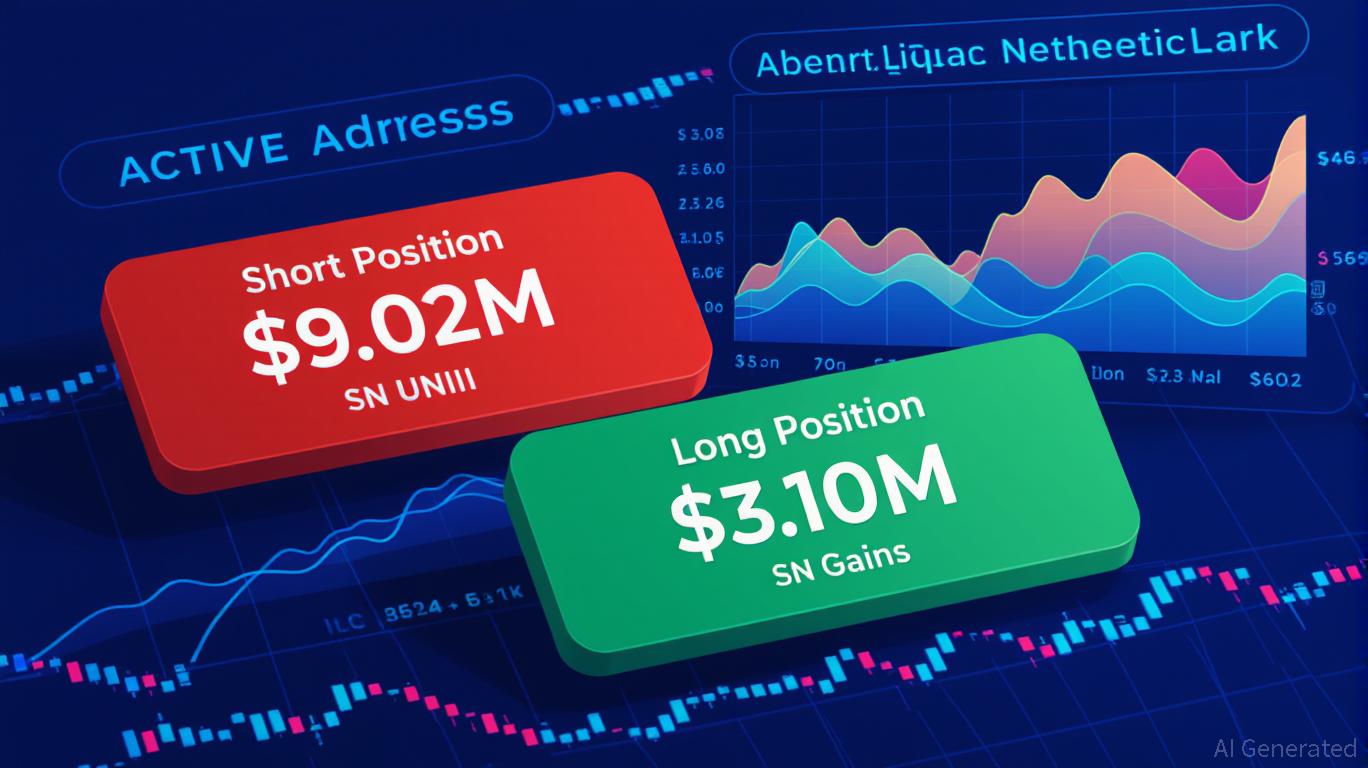Astar (ASTR) Price Rally: On-Chain Usage Growth and DeFi Cross-Chain Innovations Fuel Upward Trend
- Astar (ASTR) surged to $1.26 in late 2025 after Binance's CZ bought $2M in tokens, but ecosystem upgrades drove sustained momentum. - Q3 2025 saw 20% active wallet growth, $3.16M whale accumulation, and $2.38M TVL resilience amid broader DeFi declines. - Astar 2.0's 150,000 TPS cross-chain hub and partnerships with Casio/Mazda bridged Web2/Web3, enhancing DeFi interoperability. - Whale activity showed mixed signals, but strategic upgrades and $0.80–$1.20 2030 price targets highlight long-term investment
On-Chain Adoption: Building Blocks for Lasting Expansion
Astar’s third-quarter 2025 results highlight strong on-chain adoption. The number of active wallets rose by 20%, as detailed in a Bitget analysis, bolstered by upgrades like Agile Coretime and Asynchronous Backing that improve scalability and security. Institutional interest has also grown, with a $3.16 million accumulation of
Importantly, Astar’s Total Value Locked (TVL) reached $2.38 million in Q3 2025, bucking the broader DeFi trend, which saw TVL fall by $11.96 billion, according to Bitget. This performance demonstrates Astar’s ability to draw liquidity even amid challenging macroeconomic conditions.

DeFi Interoperability: Connecting Networks for Greater Scale
With the rollout of Astar 2.0 in September 2023, the network has become a cross-chain center. By incorporating Ethereum’s zkEVM and Polkadot’s JAM protocol, Astar now supports 150,000 TPS, with plans to double that to 300,000 TPS, enabling smooth operations across
The dApp Staking v3 initiative on the platform has also encouraged more governance involvement, aligning interests among developers, validators, and users. Partnerships with Animoca Brands and Sony Soneium are drawing Web2 audiences into Web3 through anime intellectual property and decentralized identity projects, as highlighted in a Bitget report. These efforts reinforce Astar’s position as a scalable, Ethereum-compatible smart contract platform.
Whale Movements and Market Trends
Large holders have played a key role in Astar’s price trajectory. For example, wallet 0xfE5A acquired 1.69 million ASTR tokens (worth $3.16 million) using USDT, signaling optimism, according to a Financial Content report. On the other hand, whales such as 0x9eec9 and 0xbadb, who earned $5.9 million and $1.4 million respectively from short positions, illustrate the market’s volatility, as reported by Cryptonews. Despite these fluctuations, Astar’s targeted upgrades and alliances have helped reduce risks seen in the wider DeFi space, sustaining investor trust.
Strategic Perspective and Investment Considerations
Experts anticipate ASTR could trade between $0.80 and $1.20 by 2030, provided ongoing innovation and ecosystem expansion continue, as stated in a Bitget report. Although ASTR’s 24-hour trading volume of $5.6 million indicates some liquidity constraints, its TVL and active wallet growth provide a solid base for future value. Investors are advised to watch cross-chain transaction activity and TVL patterns as important signals of Astar’s market durability.
Conclusion
Astar’s recent price rally is
Disclaimer: The content of this article solely reflects the author's opinion and does not represent the platform in any capacity. This article is not intended to serve as a reference for making investment decisions.
You may also like
Hyperliquid (HYPE) Price Rally: Increased On-Chain Engagement and Institutional Interest Drive Expansion Prospects
- Hyperliquid's HYPE token surged 32% driven by whale trading and institutional adoption via HIP-3 framework. - Whale activity shows $9M UNI short vs. $3.1M long positions, highlighting platform's speculative role in volatile assets. - Institutional partnerships with RedStone and Felix, plus 21Shares' ETF application, signal growing market confidence. - TVL reached $5B with 73% decentralized trading share, but regulatory gaps and leadership changes pose sustainability risks.

The Growing Fascination with Hyperliquid: Is This the Next Evolution in Cryptocurrency Trading?
- Hyperliquid dominates decentralized trading in 2025 with $303B Q3 volume, 62% perpetual DEX open interest, and $5B TVL growth. - Ecosystem expansion includes HyperEVM (100+ protocols, $2B TVL) and USDH stablecoin (backed by BlackRock , $2.2M trading volume). - Institutional adoption grows via 21Shares' ETF application, but risks include regulatory scrutiny, 16-validator security vulnerabilities, and HYPE token volatility. - Competitors like Aster (near-$30B daily volume) challenge Hyperliquid's dominance

YFI drops 2.95% over 24 hours as market experiences turbulence
- Yearn.finance (YFI) fell 2.95% in 24 hours to $4,851 amid crypto market volatility. - Despite short-term gains (0.96% weekly, 2.52% monthly), YFI has dropped 39.62% over one year. - Traders analyze technical indicators and on-chain data to assess if the dip is a correction or deeper trend. - A backtest evaluates moving averages and volume signals to test strategies for mitigating losses during volatility.
JPMorgan and DBS Highlight Blockchain's Move Toward Real-World International Payments
- JPMorgan and DBS Bank launched a blockchain interoperability framework enabling real-time cross-chain tokenized deposit transfers for institutional clients. - The system connects JPMorgan's Kinexys platform with DBS's Token Services, addressing blockchain network incompatibility to streamline cross-border payments and trade finance. - The initiative aligns with global banks' push for tokenized deposit standards, supported by regulators like Singapore's MAS and potentially influencing future CBDC framewor